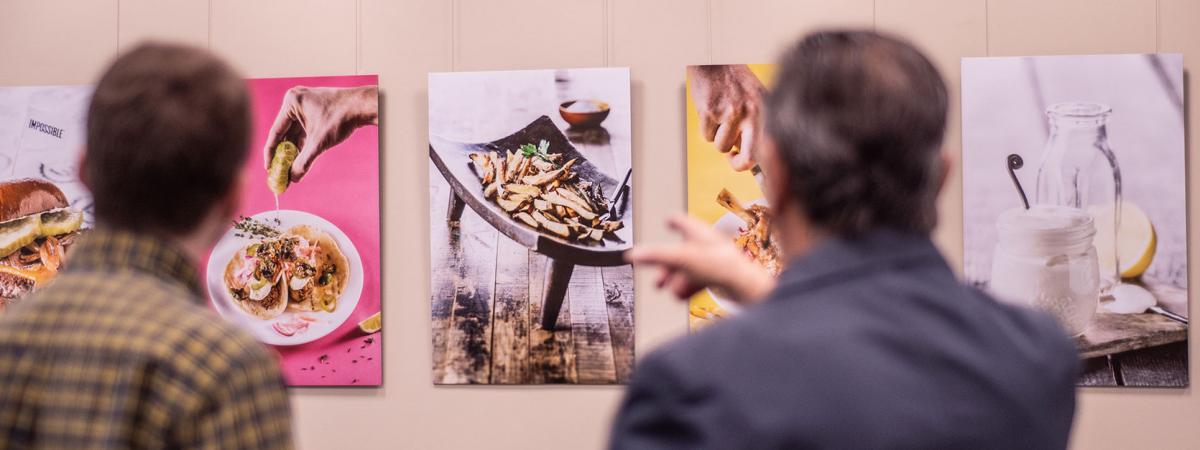Exhibits at Kelvin Smith Library enhance the library’s programming initiatives featuring the library’s collections, partnered efforts with Case Western Reserve University departments supporting student learning and faculty research, or furthering connections to the surrounding community.
FAQs:
- Members of the campus and community are invited to develop an exhibit and program partnership with the library by contacting: kslexhibits@case.edu
- The library’s exhibits and programs are scheduled with a minimum of six months of planning, some exhibition spaces are scheduled a year or more in advance.
- Submit a request for a partnered exhibit project through the Exhibit Request Form.
Exhibit spaces:
The KSL Art Gallery is an open-plan space featuring modular wall-only display space. Located on the 1st floor of the library, this exhibition space is devoted to exhibits with a campus or community focus. Exhibition frequency is three times a calendar year.
KSL Features is a pop-up exhibit space for books near the library's main entrance. The themes of these book pop-ups coincide with current programming, showcase diversity, and highlight new titles in the collection. Library patrons are encouraged to interact with and check out these titles. Each pop-up is on view for an average of two to three weeks during the academic year.
Located on the 2nd floor of the library, The O’Neill Reading Room consists of wall display space in a space with a lot of student use. Exhibition frequency is two times a calendar year, with preference for exhibits connected to KSL programming or partnerships.
The Henry R. Hatch Reading Room Special Collections exhibit space, located on the 2nd floor of the library, is devoted to exhibiting rare and unique items from KSL Special Collections or items related to these collections, mostly in exhibit cases. These exhibitions and related programming are critical to connecting Special Collections to a broader audience. Exhibit frequency is twice a calendar year in this space.
Exhibits on view now:
Look at Me! features superheroes created by young people from all over the world reimagining self-portraiture while uplifting the principles of inclusion, with a framing essay by CWRU alumna Amanda D. King.
This exhibit is part of the Superhero Project a non-profit that empowers youth who are marginalized by disabilities or illnesses, race, economics or educational status to see themselves reflected in joyful and powerful ways is critically important.
Celebrate the holiday season and welcome 2026 with Holiday Traditions on Campus and Happy New Year pop-up exhibits created by the University Archives. Holiday Traditions features programs and historic photos depicting December holiday traditions from the university’s history. Happy New Year offers a fun collection of university-created calendars.
Spanning 200 years, Backstory: Libraries of CWRU explores all the iterations of library collections, buildings, and people that supported the intellectual center of any campus, the library. On view in the O’Neill Reading Room and Administrative Services walls on the 2nd floor of Kelvin Smith Library.
In 1975, a library science graduate student reassembled the collection of books in the Catalogue of the Library in Western Reserve College. Now part of special collections, these selections representing the curriculum of WRC in the 19th century are on view now.
Enhancing this exhibit is Frederick Douglass's Narrative of the Life of Frederick Douglass, a generous gift to special collections from alumni David A. Johnson Jr. (WRC '73). Frederick Douglass delivered an address to Western Reserve College in 1854.



